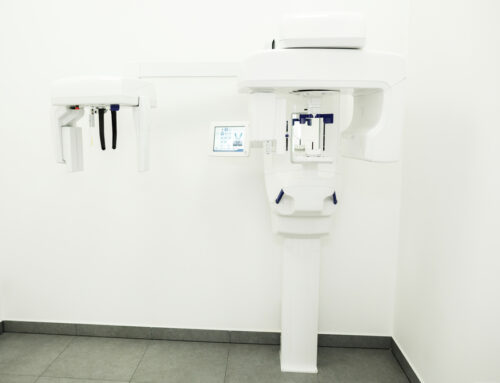June is Pride Month, and what better way to celebrate than by ensuring the gender-diverse community feels affirmed in healthcare spaces!
A significant number of gender-diverse individuals report having aversive experiences in healthcare settings. These include being provided inappropriate care, receiving unnecessary referrals to “gender specialists” (hint: there is no such thing) or outright being denied care.
We can all become gender-affirmative providers by becoming educated on what it means to identify as gender-diverse, making ourselves aware of barriers to care, and striving to be conscientious of creating a welcoming environment. In doing so, we can intentionally collaborate with our colleagues and places of employment to ensure excellent physical and mental healthcare is provided to our gender-diverse community.
Here are several tips on best practices for gender-affirming care.
1. Avoid Assumptions
We’ve likely all heard the phrase, “assume makes an ass out of you and me.”
This is certainly true, as assuming places people into boxes (i.e. dichotomized boxes such as “man” or “woman”) and limits our understanding of their authentic and lived experiences.
Oftentimes, when individuals encounter gender-diverse folks, they make quick assumptions about their gender identity and want to categorize them as “male” or “female.” When we assume, we automatically limit our understanding of individuals and their self-described identity, experiences and, most importantly, healthcare needs.
Avoid assumptions by approaching individuals with an open mind and allowing them to inform you about parts of their lives that they feel comfortable disclosing and the needs that they have relative to the encounter.
Don’t assume gender identity based upon looks or sounds. Remove gendered language by asking something like, “How may I help you?” instead of “How may I help you, sir?” In addition, remove assumptive language such as, “Is this your wife/husband that has accompanied you?” Instead ask, “Who has accompanied you to your appointment?”
If we challenge ourselves to slow down our need to automatically know a patient’s gender identity, sexual orientation, marital status and so on, we will slow down unhelpful assumptions too.
2. Maintain Open Body Language
If you meet a person and their arms or legs are crossed, you probably feel as if they are judging you, are uncomfortable or do not want to be present.
These subtle implicit communications are quickly noticed, especially by gender-diverse individuals who have historically faced a great deal of stigma, prejudice and discrimination in a variety of situations.
If we are conscientious about maintaining an open body position with our hands resting gently on our sides or lightly folded across our laps, with our legs uncrossed, we communicate to the other person that we are open to them and actively listening to what they have to share.
3. Use Affirmative Pronouns & Names
It’s common to encounter gender-diverse individuals who either have not yet been able to legally change their name or gender marker on legal records or do not desire to change anything.
In most cases, this can be a long and costly process. In some states, they may be required to pursue some degree of hormonal or surgical intervention to even be eligible to change their legal records. Therefore, it is of the utmost importance to use the name and pronouns that a person currently identifies as and to periodically ask for updates.
The gender identity development process is typically ongoing and fluid. If you are unsure about a person’s name or pronouns, ask simple questions such as, “What name would you like me to use?” and “What pronouns do you identify with?”
If you want to go the extra mile, you can even introduce yourself with your name and pronouns, such as, “My name is Dr. Reed, but feel free to call me Oak. I use he/him/his pronouns. What is your name and preferred pronouns?” You can even purchase a pin or button to clip onto your nametag that demonstrates your pronouns!
If you encounter trouble finding a person in your system, remain neutral and calm. Try asking things like, “Could your chart be listed under a different name?” or “What name is your insurance listed under?”
Lastly, if you make a mistake, don’t sweat it! Quickly apologize and move on — do not make a big ordeal out of it.
4. Discuss Only Relevant Topics
The phenomenon of the “trans broken arm syndrome” has permeated healthcare settings for far too long. This is what happens when, for instance, someone comes in with a broken arm and a provider attempts to find an arbitrary link to the person identifying as transgender (e.g., “the patient broke their arm because they are on testosterone”).
We need to ensure we provide appropriate, relevant and top-notch care to all patients, including our gender-diverse population. Although it may be alluring to ask questions about a person’s surgical history, years on hormones, name assigned at birth or other topics related to their gender identity, it may also be completely unrelated to the reason they are seeking care. Be certain to tailor your care to their presenting concern and avoid assuming that their gender identity has a direct correlation with what they have come in for.
Furthermore, if someone comes in for a routine care visit but they are due for a pap smear or prostate exam, for example, be proactive in asking “organ inventory”-type questions, such as “Do you currently have a uterus?” or “What does your current anatomy entail?”
In addition, find comfortable ways to ask how you can be affirmative toward their current anatomy by asking questions such as, “How would you like me to address your anatomy?”

5. Locate Gender-Neutral Bathrooms
You probably wouldn’t be shocked to learn people do not enjoy going to the bathroom directly next door to someone else. Most of us prefer to take advantage of single-stall bathrooms to avoid discomfort and to have some privacy.
Although making such bathrooms available is a simple step, it can have a profound impact on the gender-diverse population. It also can be life-saving (not to be dramatic), as in some states you must use the bathroom associated with the sex listed on your birth certificate, making it illegal to use the bathroom you identify with.
Scope out your workplace and identify where gender-neutral bathrooms are in order to give directions. You could even go a step further and type out directions on how to find these bathrooms, then post them throughout the office space. Lastly, if your organization contains single-stall bathrooms that are currently gendered, advocate for them to be transitioned into gender-neutral bathrooms.
6. Ensure EHRs Are Up To Date
If you work with an Electronic Health Record (EHR), find ways to take advantage of features to best affirm patients.
For example, many EHRs let you add in a person’s preferred name, gender identity and pronouns. Some even have a space to document a person’s current organs, which can be helpful to review prior to interacting with that person so that you can avoid assumptions and make sure the care provided is most appropriate.
If the EHR that your organization uses does not have places to document affirmative information, consider connecting with IT to see if there are ways to make improvements!
7. Review Your Non-Discrimination Policy
This is a simple step, but take a few moments to review your company’s non-discrimination policy. Doing so can be very helpful in making sure your own behavior and your colleagues’ behaviors are in line with the non-discrimination policy.
Importantly, these policies are in place to protect patients and workers. Remember, not only is it important to be a gender-affirmative provider for your patients’ sake, but also for your colleagues’ sake, as it is highly likely that you have several gender-diverse individuals within your workplace.
Being familiar with your non-discrimination policy can also empower you to identify and correct any behaviors that are in conflict with that policy.
8. Add Affirmative Decor
Walk through the front door of your workplace and ask yourself, “What does the environment communicate?” Ask yourself if it feels warm, welcoming and safe.
Putting yourself in the shoes of your patients can be incredibly insightful and help you brainstorm ways to improve the full patient experience, starting at the front door.
Find ways to incorporate subtle indicators that the environment is an affirmative space, such as pride flags or stickers, magazines that represent gender-diverse perspective, local/state/national handouts representing gender-diverse resources, pronoun pins and so much more!
Take on the perspective of the patient to ensure the environment clearly communicates safety and a welcoming vibe.
9. Research Local, State, and National Resources
Do your own research to find resources you can share with patients. Network with colleagues to build a list of “gender-affirmative providers” so that, if you need to refer to a certain specialty provider, you can be sure the referral is to a reliable and affirmative source.
Some great resources include but are not limited to:
- Adult Transgender Care: An Interdisciplinary Approach to Training Mental Health Professionals: https://www.routledge.com/Adult-Transgender-Care-An-Interdisciplinary-Approach-for-Training-Mental/Kauth-Shipherd/p/book/9781138229037
- Transgender Law Center: https://transgenderlawcenter.org/
- The Fenway Institute: https://doaskdotell.org/ehr/toolkit/
- Joint Commission: https://www.jointcommission.org/-/media/tjc/documents/resources/patient-safety-topics/health-equity/lgbtfieldguide_web_linked_verpdf.pdf
- National Center for Transgender Equality: https://transequality.org/
- National LGBTQIA+ Health Education Center: https://www.lgbtqiahealtheducation.org/wp-content/uploads/2020/03/TFIE-40_Best-Practices-for-Frontline-Health-Care-Staff-Publication_web_final.pdf
- Endocrine Society: https://www.endocrine.org/guidelines-and-clinical-practice/clinical-practice-guidelines/gender-dysphoria-gender-incongruence
- World Professional Association for Transgender Health: https://www.wpath.org/
- Center of Excellence for Transgender Health: https://prevention.ucsf.edu/transhealth
- National Geographic Documentary – Gender Revolution: https://www.nationalgeographic.org/education/gender-revolution/
10. Continue Pursuing Education
Most importantly, make sure to continue seeking opportunities to learn more.
Best practices evolve and grow! Look for continuing education credits that focus on gender-affirmative care, training that focuses on creating a “safe zone,” and any other offerings that focus on how to best care for the gender-diverse community.
Better yet, encourage your place of employment to advocate for the inclusion of these types of trainings as either mandatory for onboarding of new employees or for annual training updates.
Learning and growing are processes that never end. By always striving to do better and create a welcoming environment, we can become more respectful care providers for the gender-diverse community.




